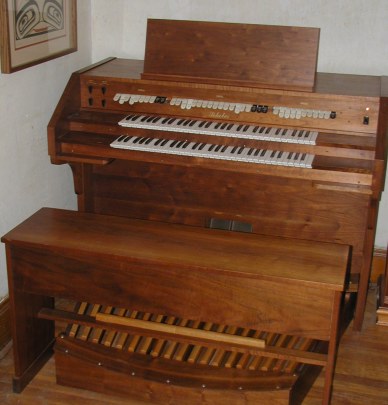| Home |
Introduction |
In the Beginning |
Devtronix Generators |
Devtronix Reverb |
| Restoring Keyboards |
Pedalboard | Other Repairs |
Results |
Specification |
| Introduction This site describes my adventures with a Schober Recital organ, a transistorized electronic organ built from a kit. It contains literally thousands of electronic components which took months to solder together back in 1973. Even more challenging for me was assembling the console, the bench, and the full 32-note AGO pedal clavier. The result is a two manual electronic organ suitable for performing classical organ music. But after 34 years, the organ and especially the keyboards needed a thorough cleaning and restoration, now mostly completed. On these pages I've described the entire process of cleaning contacts in detail, as well as adjusting the pedalboard. Beyond restoring the original Schober circuits, I'm in the process of adding MIDI outputs which will play three ranks of pipes. I think Richard Dorf would have liked the interface I've designed, since it won't interfere with the original analog circuitry. I hope this site will encourage other Schober owners, whether they have the Recital, the Theater Organ, the Consolette II, or some other model, to dust off their instruments and get them back in good working order. Since Schober organs are often available for minimal cost or even for free, anyone can become a Schober owner by investing the time to do the restoration. Either way, be sure to check the Schober Organ Orphans web site for lots of useful information, and to sign up for their newsletter if you haven't already. (Note that all pictures on this site can be clicked for larger versions. To return to the text, use the Back button on your browser.) | |
 |